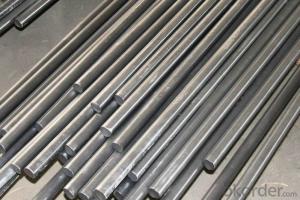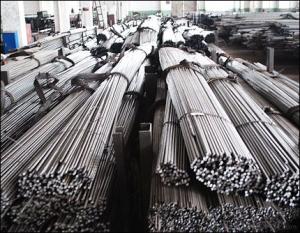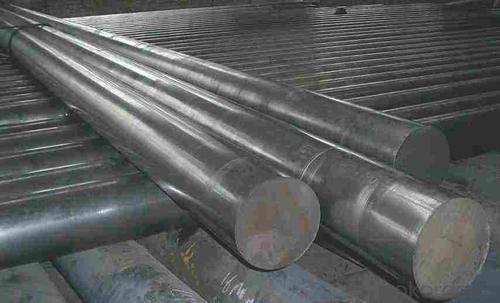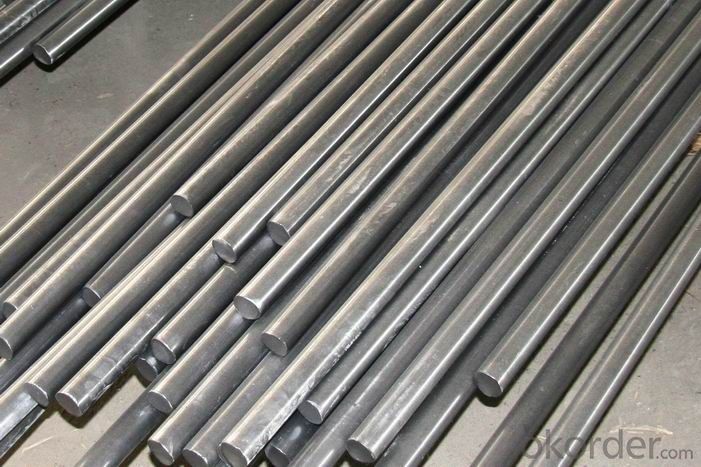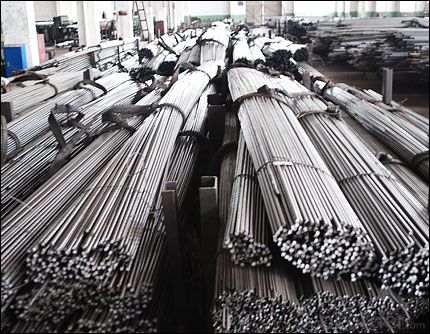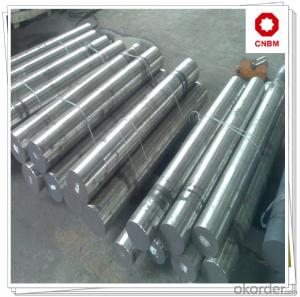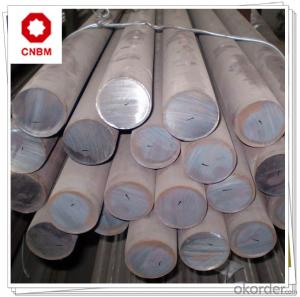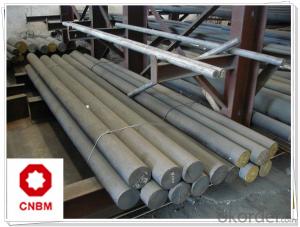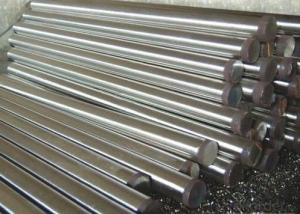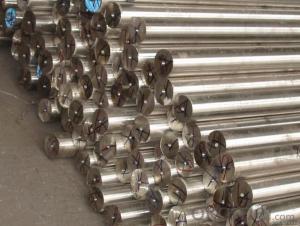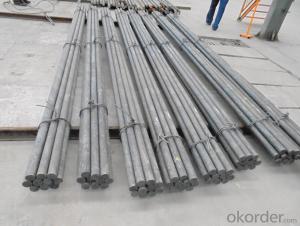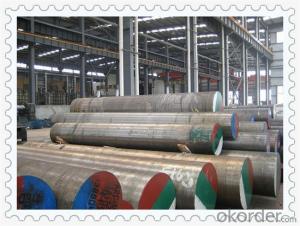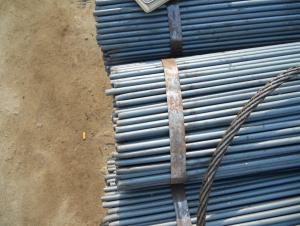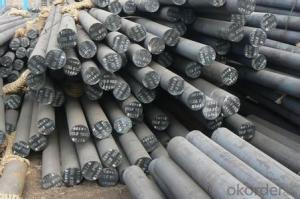6mm*0.222kg/m round bar for construction RB
- Loading Port:
- Tianjin
- Payment Terms:
- TT or LC
- Min Order Qty:
- 25 m.t.
- Supply Capability:
- 100000 m.t./month
OKorder Service Pledge
OKorder Financial Service
You Might Also Like
Product Description:
OKorder is offering 6mm*0.222kg/m round bar for construction RB at great prices with worldwide shipping. Our supplier is a world-class manufacturer of steel, with our products utilized the world over. OKorder annually supplies products to European, North American and Asian markets. We provide quotations within 24 hours of receiving an inquiry and guarantee competitive prices.
Product Applications:
6mm*0.222kg/m round bar are ideal for structural applications and are widely used in the construction of buildings and bridges, and the manufacturing, petrochemical, and transportation industries.
Product Advantages:
OKorder's round bar are durable, strong, and resist corrosion.
Main Product Features:
· Premium quality
· Prompt delivery & seaworthy packing (30 days after receiving deposit)
· Corrosion resistance
· Can be recycled and reused
· Mill test certification
· Professional Service
· Competitive pricing
Product Specifications:
Specifications of High Quality Round Bar
1. Grade: GB, JIS, ASTM, EN
2. Grade: Q235, SS400, A36, S235JR
3. Diameter and mass: As below
Diameter | Mass | Diameter | Mass | Diameter | Mass |
(mm) | (kg/m) | (mm) | (kg/m) | (mm) | (kg/m) |
6 | 0.22 | 22 | 2.98 | 53 | 17.30 |
7 | 0.30 | 24 | 3.55 | 56 | 19.30 |
8 | 0.40 | 25 | 3.85 | 60 | 22.20 |
9 | 0.50 | 26 | 4.17 | 63 | 24.50 |
10 | 0.62 | 28 | 4.83 | 65 | 26.00 |
11 | 0.75 | 30 | 5.55 | 70 | 30.20 |
12 | 0.89 | 32 | 6.31 | 75 | 34.70 |
13 | 1.04 | 34 | 7.13 | 80 | 39.50 |
14 | 1.21 | 36 | 7.99 | 85 | 44.50 |
15 | 1.39 | 38 | 8.90 | 90 | 49.90 |
16 | 1.58 | 40 | 9.86 | 95 | 55.60 |
17 | 1.78 | 42 | 10.90 | 100 | 61.70 |
18 | 2.00 | 45 | 12.50 | 120 | 88.85 |
19 | 2.23 | 48 | 14.20 | 140 | 120.93 |
20 | 2.47 | 50 | 15.40 | 150 | 138.82 |
4. Material: Mild Steel
5. Heat treatment of high quality steel:
Fire: Isothermal annealing temperature is 800 ~ 880 °C, with 10 ~ 20 °C, the furnace cooling to about 600 °C, hardness above HB269.
Preheat temperature: 730-730 °C
Quenching temperature: 1190-1210 °C
Tempering temperature: 540-595 °C
Cold drawn, hardness 285 HBS
Cold drawn after annealing condition, hardness 277 HBS
Quenching methods: oil quenching, air cooling or salt bath quenching
Usage and Applications of High Quality Round Bar
1) Suitable for making various strong cutting tool abrasion resistance, impact resistance.
2) Used to produce all kinds of high hard and super hard saw blade, drill, tap, broach, gear hob and various kinds of milling cutter.
3) Used for advanced punching die, screw die, and the toughness and complicated shape of the punch, etc.
4) Is used for cold forging die and drawing mode, etc.
5) Recommended watchcase factory, screw factory and other cold stamping products industry use.
Packaging & Delivery of High Quality Round Bar
Packaging Detail: All goods are packed in bundle with steel strips and shipped by break bulk vessel or container (depend on target market and different ports)
Delivery Detail: 45 days
Trade terms: FOB, CFR, CIF
MOQ: 25 tons per specification; we can negotiate the quantity if the specification is normal or we have stock of one specification.
Weight: The price invoicing on theoretical weight basis or actual weight basis depends on customer’s request.
Shipment: The shipment of bulk break or container is depends on customer’s request and the situation of the port of destination.
Documents given: Full set of original clean on board bill of lading; Original signed commercial invoice; Original packing list; Policy of insurance; Certificate of origin and what the target market needs.
Production Flow of High Quality Round Bar
The common processes are preheated forging quenching, dual refinement solution process, cooling quenching and isothermal quenching. We use heat treatment for dual refinement solution process. The main measures process is high temperature solution and refinement cycle. High temperature solution can improve the carbide morphology and particle size. The aim is to make the loop refinement ultrafine austenite grains.
FAQ:
Q1: How do we guarantee the quality of our products?
A1: We have established an advanced quality management system which conducts strict quality tests at every step, from raw materials to the final product. At the same time, we provide extensive follow-up service assurances as required.
Q2: Can stainless steel rust?
A2: Stainless does not "rust" as you think of regular steel rusting with a red oxide on the surface that flakes off. If you see red rust it is probably due to some iron particles that have contaminated the surface of the stainless steel and it is these iron particles that are rusting. Look at the source of the rusting and see if you can remove it from the surface.
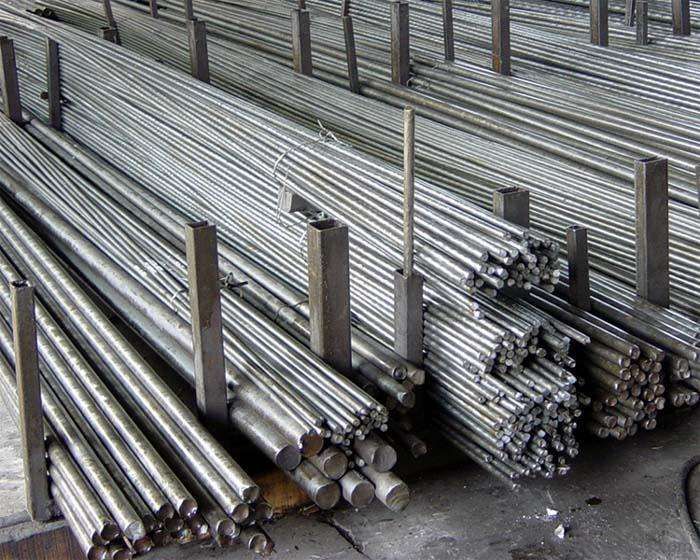
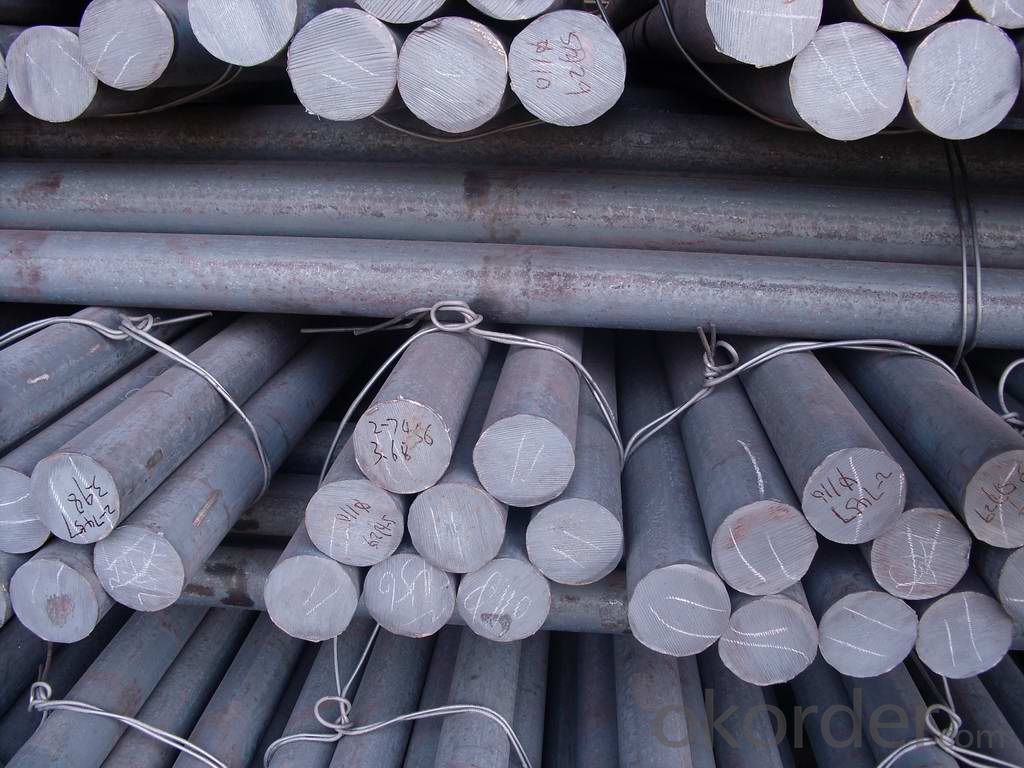
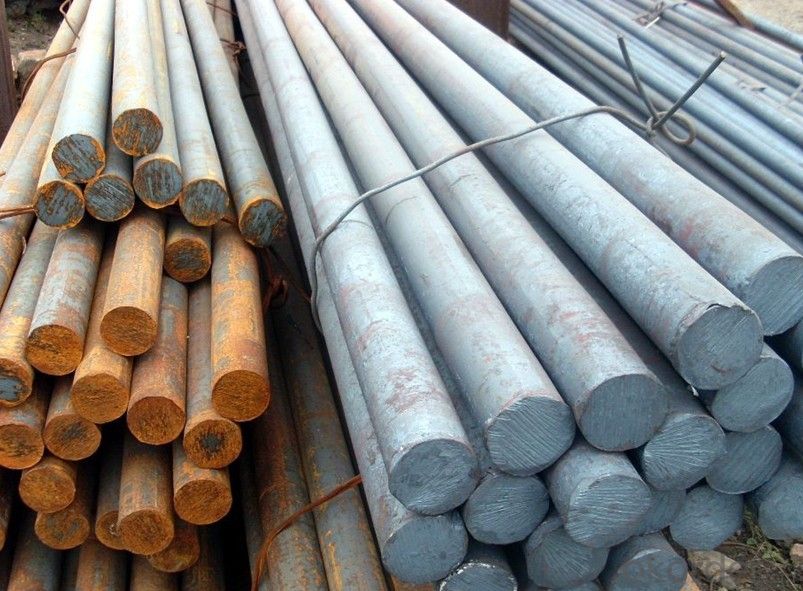
- Q: Are steel round bars suitable for marine applications?
- Yes, steel round bars are suitable for marine applications. Steel is known for its strength, durability, and corrosion resistance, making it a popular choice for various marine applications. Steel round bars are commonly used in the construction of marine structures, such as shipbuilding, offshore platforms, and marine equipment. The high tensile strength of steel allows it to withstand the harsh conditions of the marine environment, including the corrosive effects of saltwater. Additionally, steel can be easily fabricated and welded, making it a versatile material for marine applications. However, it is important to consider the specific requirements of the marine application and choose the appropriate type of steel round bar. Duplex stainless steel, for example, offers superior corrosion resistance compared to standard carbon steels and is often preferred for marine applications. It is also crucial to apply proper maintenance and protective coatings to ensure the longevity and performance of steel round bars in marine environments. Overall, steel round bars are a suitable choice for marine applications due to their strength, durability, and corrosion resistance. However, it is essential to select the right type of steel and implement proper maintenance practices to ensure optimal performance in the marine environment.
- Q: What is the difference between a centerless ground and a rough turned steel round bar?
- The manufacturing processes and resulting surface finishes of a centerless ground steel round bar and a rough turned steel round bar differ. To produce a centerless ground steel round bar, the bar is fed through a grinding machine. This machine removes material from the surface, achieving precise diameter and roundness tolerances. The bar is rotated between two grinding wheels, while pressure is applied to remove imperfections and create a smooth, polished surface. The end result is a highly accurate and consistent diameter, with a mirror-like finish. This makes it suitable for applications that require tight tolerances and a polished appearance. On the other hand, a rough turned steel round bar is manufactured using a different machining process called turning. In this process, the bar is rotated against a cutting tool, which removes material from the surface to achieve the desired diameter and shape. However, turning does not provide the same level of precision and surface finish as centerless grinding. The resulting surface of a rough turned bar will have visible tool marks and a rougher texture compared to a centerless ground bar. In conclusion, the main distinction between a centerless ground steel round bar and a rough turned steel round bar lies in their manufacturing processes and resulting surface finishes. Centerless grinding offers a more precise diameter, roundness, and smoother surface finish, making it ideal for applications that require tight tolerances and a polished appearance. Rough turning, while less precise and with a rougher surface finish, is still suitable for applications that do not require the same level of precision or aesthetic appeal.
- Q: What is the maximum elongation of steel round bars?
- The maximum elongation of steel round bars depends on various factors such as the type of steel, its composition, and the manufacturing process. However, in general, steel round bars can have elongation values ranging from 10% to 30% before they reach their maximum limit and start to deform permanently.
- Q: What's the difference between bar and round bar?
- Bars can be either round or square or six sides.Another argument is that bars usually refer to short ones. The rounds are not cut, usually 6 meters long supply.
- Q: Can steel round bars be used in high-temperature environments?
- Yes, steel round bars can be used in high-temperature environments. However, the specific type of steel and its composition need to be carefully chosen to ensure it has the necessary heat resistance properties, such as high melting point and good strength retention at elevated temperatures.
- Q: What is the difference between hot-rolled and cold-rolled steel round bars?
- The manufacturing process is the primary factor that distinguishes hot-rolled and cold-rolled steel round bars, giving rise to distinct physical and mechanical properties. Hot-rolled steel round bars are formed by subjecting a billet or ingot to extremely high temperatures, usually above 1700°F (926°C). This allows the steel to become malleable and easily shaped. The process involves passing the heated steel through large rollers, which gradually decrease the diameter and increase the length. Consequently, hot-rolled bars have a rough, scaled surface with rounded edges. The rapid cooling that follows also creates an oxide layer or mill scale on the surface. In contrast, cold-rolled steel round bars are produced by rolling the steel at room temperature or slightly below. This method offers greater control over the dimensions and surface finish of the bars. The process entails passing the steel through smaller rollers, which exert high pressure to shape and compress the material. As a result, cold-rolled bars have a smoother and more precise surface finish, with sharper edges compared to their hot-rolled counterparts. Furthermore, since the steel is not subjected to high temperatures, it retains its strength and hardness properties. The differing manufacturing processes lead to variations in the mechanical properties of hot-rolled and cold-rolled steel round bars. Hot-rolled bars typically have a higher yield strength and are generally more ductile, making them suitable for applications that involve extensive shaping or bending. On the other hand, cold-rolled bars have a higher tensile strength and are generally harder, making them suitable for applications that require greater strength and dimensional accuracy. In conclusion, the key distinctions between hot-rolled and cold-rolled steel round bars arise from the manufacturing process, resulting in differences in surface finish, dimensional accuracy, and mechanical properties. The choice between the two depends on the specific requirements of the intended application.
- Q: What are the advantages of using high-speed steel round bars?
- High-speed steel (HSS) round bars have several advantages. Firstly, they offer excellent hardness, allowing them to withstand high temperatures and wear. This makes them suitable for cutting tools and machine parts that undergo intense friction and heat. Additionally, HSS round bars have superior toughness, enabling them to resist chipping and breaking during heavy-duty applications. Furthermore, their high thermal conductivity helps dissipate heat efficiently, preventing damage to the material being worked on and prolonging tool life. Lastly, HSS round bars have good dimensional stability, ensuring accurate and precise machining results.
- Q: What is the yield strength to tensile strength ratio of a steel round bar?
- The yield strength to tensile strength ratio of a steel round bar is typically around 0.85.
- Q: Can steel round bars be used in the production of electrical equipment?
- Steel round bars are capable of being utilized in the production of electrical equipment. Steel possesses a multitude of properties that render it suitable for various applications, including electrical equipment. Components such as shafts, connectors, and structural supports within electrical equipment can be manufactured using steel round bars. The reliability of steel is derived from its strength and durability, enabling it to withstand the mechanical stresses and environmental conditions that electrical equipment may encounter. Moreover, steel offers favorable electrical conductivity and magnetic properties, crucial characteristics for specific electrical components. Nevertheless, it is important to acknowledge that steel round bars may necessitate additional processes like machining, heat treatment, or surface finishing in order to meet specific requirements for the production of electrical equipment.
- Q: What are the different testing methods used for steel round bars?
- Steel round bars undergo various testing methods to guarantee their quality and suitability for different applications. These methods encompass: 1. Visual Inspection: In this preliminary step, the bars are visually assessed for any discernible defects, such as cracks, surface irregularities, or incorrect dimensions. 2. Dimensional checks: To verify their diameter, length, and straightness, steel round bars are subject to dimensional scrutiny. Accurate measurements are imperative to meet specified requirements. 3. Ultrasonic Testing: Internal defects like cracks, voids, or inclusions are detected by passing ultrasonic waves through the round bars. This method identifies potential weaknesses that could compromise the bars' structural integrity. 4. Magnetic Particle Inspection: By utilizing a magnetic field and magnetic particles, this method identifies surface and near-surface defects like cracks, seams, or laps. It is especially advantageous for ferromagnetic materials like steel. 5. Dye Penetrant Inspection: This technique involves applying a colored dye to the round bars' surface and subsequently wiping it off. The dye seeps into any surface cracks or defects, making them visible under ultraviolet light. 6. Hardness Testing: To gauge the hardness of steel round bars, hardness testing is conducted using methods like Rockwell or Brinell scales. It assists in determining the material's ability to withstand external forces and ensures compliance with required hardness specifications. 7. Tensile Testing: This test measures the maximum load a steel round bar can bear before fracturing, providing insight into the material's strength and ductility. 8. Chemical Analysis: Chemical analysis is performed to ascertain the composition of the steel round bars, including the presence of elements like carbon, manganese, sulfur, phosphorus, and others. It guarantees adherence to the required chemical composition standards. These testing methods are vital in ensuring that steel round bars meet industry standards and customer requirements in terms of quality, reliability, and compliance. Employing a combination of these tests is essential to ensure overall quality and performance in various applications.
Send your message to us
6mm*0.222kg/m round bar for construction RB
- Loading Port:
- Tianjin
- Payment Terms:
- TT or LC
- Min Order Qty:
- 25 m.t.
- Supply Capability:
- 100000 m.t./month
OKorder Service Pledge
OKorder Financial Service
Similar products
Hot products
Hot Searches
Related keywords

